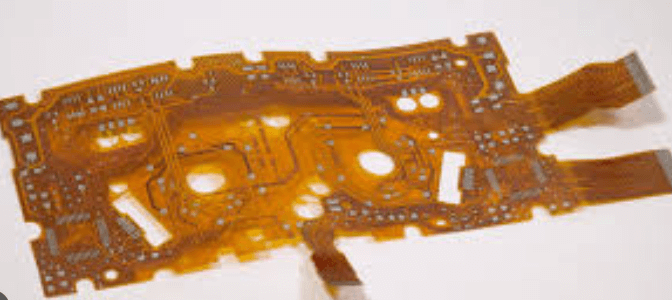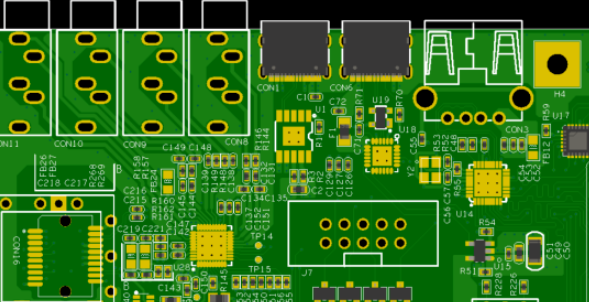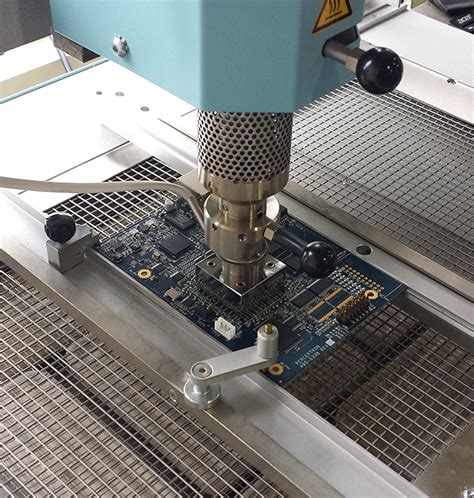Understanding Flex PCB Thickness: A Comprehensive Guide
Flexible Printed Circuit Boards (Flex PCBs) have become an integral part of modern electronics, offering unique advantages in terms of flexibility, weight reduction, and space-saving design. One of the critical factors that influence the performance and application of Flex PCBs is their thickness. The thickness of a Flex PCB not only affects its mechanical properties but also its electrical performance, durability, and suitability for specific applications. This article delves into the various aspects of Flex PCB thickness, including its importance, standard thickness ranges, factors influencing thickness, and considerations for design and manufacturing.
1. Importance of Flex PCB Thickness
The thickness of a Flex PCB is a crucial parameter that impacts several aspects of its functionality and performance:
- Mechanical Flexibility: Thinner Flex PCBs are more flexible and can be bent or folded more easily, making them suitable for applications where space constraints and dynamic flexing are critical. However, excessive thinness can compromise the mechanical strength and durability of the PCB.
- Electrical Performance: The thickness of the dielectric layers and copper traces affects the impedance, capacitance, and signal integrity of the PCB. Proper control of thickness is essential to meet the electrical requirements of high-speed and high-frequency circuits.
- Thermal Management: Thicker Flex PCBs generally have better thermal conductivity, which helps in dissipating heat generated by components. This is particularly important in high-power applications where thermal management is critical.
- Durability and Reliability: The thickness of the Flex PCB influences its ability to withstand mechanical stress, environmental factors, and repeated flexing. A well-chosen thickness ensures long-term reliability and performance in demanding conditions.
2. Standard Thickness Ranges for Flex PCBs
Flex PCBs are available in a range of thicknesses, typically measured in mils (thousandths of an inch) or micrometers (µm). The standard thickness ranges for Flex PCBs are as follows:
- Single-Layer Flex PCBs: These are the simplest type of Flex PCBs, consisting of a single conductive layer (usually copper) on a flexible substrate. The typical thickness for single-layer Flex PCBs ranges from 0.1 mm (4 mils) to 0.3 mm (12 mils).
- Double-Layer Flex PCBs: These PCBs have two conductive layers separated by a dielectric layer. The thickness of double-layer Flex PCBs typically ranges from 0.2 mm (8 mils) to 0.5 mm (20 mils).
- Multi-Layer Flex PCBs: These PCBs consist of three or more conductive layers, with dielectric layers in between. The thickness of multi-layer Flex PCBs can vary widely, typically ranging from 0.4 mm (16 mils) to 1.0 mm (40 mils) or more, depending on the number of layers and the application requirements.
- Rigid-Flex PCBs: These PCBs combine rigid and flexible sections, offering the benefits of both types. The thickness of rigid-flex PCBs can vary significantly, with flexible sections typically ranging from 0.1 mm (4 mils) to 0.3 mm (12 mils) and rigid sections ranging from 0.8 mm (32 mils) to 2.0 mm (80 mils) or more.
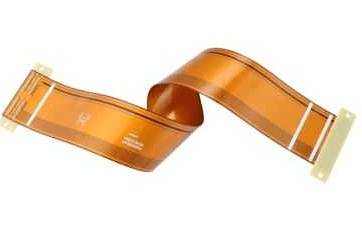
3. Factors Influencing Flex PCB Thickness
Several factors influence the choice of thickness for a Flex PCB, including:
- Application Requirements: The intended use of the Flex PCB plays a significant role in determining its thickness. For example, wearable electronics and medical devices often require ultra-thin Flex PCBs for maximum flexibility and comfort, while industrial applications may require thicker PCBs for enhanced durability and thermal management.
- Number of Layers: The number of conductive layers in a Flex PCB directly affects its thickness. Single-layer Flex PCBs are thinner, while multi-layer and rigid-flex PCBs are thicker due to the additional layers of conductive material and dielectric.
- Material Selection: The choice of materials for the conductive layers, dielectric, and coverlay affects the overall thickness of the Flex PCB. Common materials include polyimide for the substrate and coverlay, and copper for the conductive layers. The thickness of these materials can vary, influencing the overall thickness of the PCB.
- Manufacturing Process: The manufacturing process, including lamination, etching, and plating, can impact the final thickness of the Flex PCB. Precision in these processes is essential to achieve the desired thickness and ensure consistency across the PCB.
- Electrical and Mechanical Requirements: The electrical performance, such as impedance control and signal integrity, and mechanical requirements, such as flexibility and durability, must be considered when selecting the thickness of a Flex PCB.
4. Design Considerations for Flex PCB Thickness
Designing a Flex PCB with the appropriate thickness requires careful consideration of several factors:
- Bend Radius: The bend radius is the minimum radius at which a Flex PCB can be bent without causing damage. Thinner Flex PCBs have a smaller bend radius, making them suitable for tight spaces and dynamic flexing applications. Designers must ensure that the chosen thickness allows for the required bend radius without compromising the PCB’s integrity.
- Impedance Control: For high-speed and high-frequency circuits, controlling the impedance of the traces is critical. The thickness of the dielectric layers and copper traces affects the impedance, and designers must carefully calculate and select the appropriate thickness to meet the impedance requirements.
- Thermal Management: In applications where heat dissipation is a concern, designers must consider the thermal conductivity of the Flex PCB. Thicker PCBs with additional copper layers can help dissipate heat more effectively, but this must be balanced against the need for flexibility and weight reduction.
- Mechanical Stress: Flex PCBs are often subjected to mechanical stress, including bending, twisting, and vibration. The thickness of the PCB must be chosen to withstand these stresses without causing failure or degradation of the electrical connections.
- Assembly and Integration: The thickness of the Flex PCB can impact its assembly and integration into the final product. Thicker PCBs may require additional considerations for mounting, connectors, and interconnects, while thinner PCBs may require special handling to avoid damage during assembly.
5. Manufacturing Considerations for Flex PCB Thickness
The manufacturing process for Flex PCBs must be carefully controlled to achieve the desired thickness and ensure consistency across the PCB. Key considerations include:
- Material Selection: The choice of materials for the substrate, conductive layers, and coverlay must be compatible with the desired thickness and performance requirements. High-quality materials with consistent thickness are essential for reliable manufacturing.
- Lamination Process: The lamination process involves bonding the layers of the Flex PCB together under heat and pressure. Proper control of the lamination process is critical to achieve the desired thickness and ensure uniformity across the PCB.
- Etching and Plating: The etching process removes unwanted copper from the conductive layers, while the plating process adds copper to the vias and through-holes. Precision in these processes is essential to maintain the desired thickness and ensure the integrity of the electrical connections.
- Inspection and Testing: After manufacturing, the Flex PCB must be inspected and tested to verify that the thickness meets the specified requirements. This may involve using precision measurement tools, such as micrometers or laser scanners, to ensure consistency and accuracy.
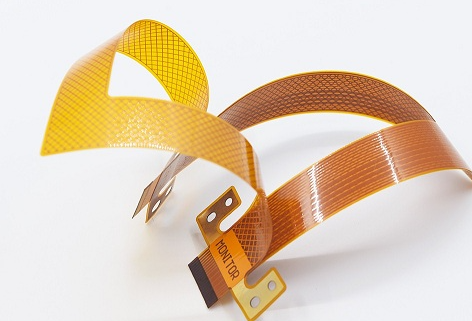
6. Applications of Flex PCBs with Different Thicknesses
The thickness of a Flex PCB is often tailored to the specific requirements of the application. Some common applications and their typical thickness requirements include:
- Wearable Electronics: Wearable devices, such as smartwatches and fitness trackers, require ultra-thin Flex PCBs with a thickness of 0.1 mm (4 mils) or less. These PCBs must be highly flexible and lightweight to ensure comfort and durability.
- Medical Devices: Medical devices, such as implantable sensors and diagnostic equipment, often require thin Flex PCBs with a thickness of 0.2 mm (8 mils) or less. These PCBs must be biocompatible and capable of withstanding repeated flexing and sterilization.
- Consumer Electronics: Consumer electronics, such as smartphones and tablets, often use Flex PCBs with a thickness of 0.3 mm (12 mils) or less. These PCBs must be flexible enough to fit into compact spaces while maintaining reliable electrical performance.
- Automotive Electronics: Automotive applications, such as sensors and control modules, often require thicker Flex PCBs with a thickness of 0.5 mm (20 mils) or more. These PCBs must be durable and capable of withstanding harsh environmental conditions, including temperature extremes and vibration.
- Industrial Equipment: Industrial equipment, such as robotics and machinery, often requires thick Flex PCBs with a thickness of 1.0 mm (40 mils) or more. These PCBs must be robust and capable of withstanding mechanical stress and high temperatures.
7. Conclusion
The thickness of a Flex PCB is a critical parameter that influences its mechanical flexibility, electrical performance, thermal management, and durability. Understanding the factors that affect Flex PCB thickness and carefully considering the design and manufacturing requirements are essential for achieving optimal performance in specific applications. Whether for wearable electronics, medical devices, consumer electronics, automotive systems, or industrial equipment, selecting the appropriate Flex PCB thickness is key to ensuring reliability, functionality, and longevity in the final product. As technology continues to advance, the demand for thinner, more flexible, and more durable Flex PCBs will only grow, making the understanding of Flex PCB thickness more important than ever.

